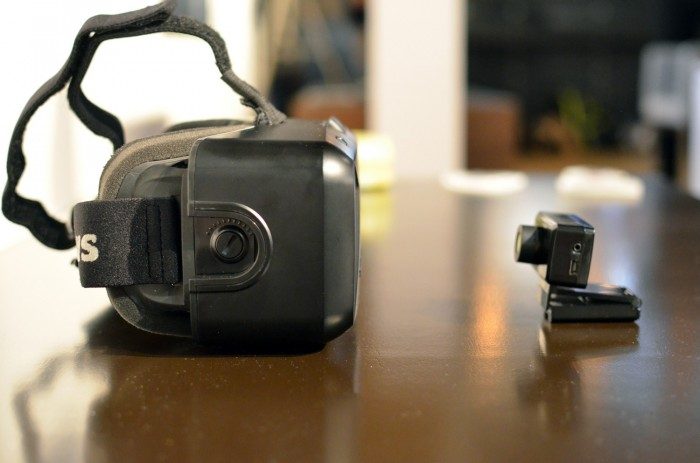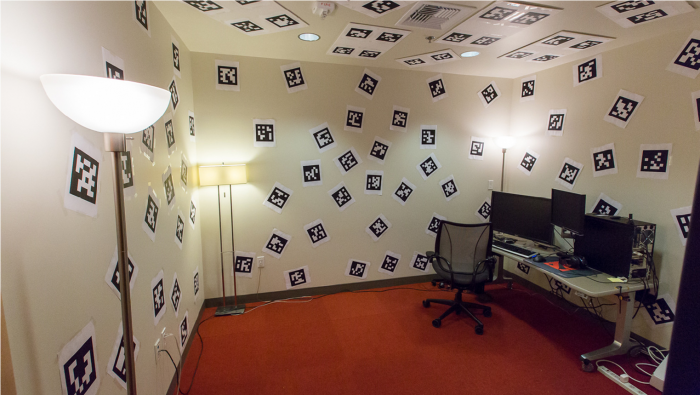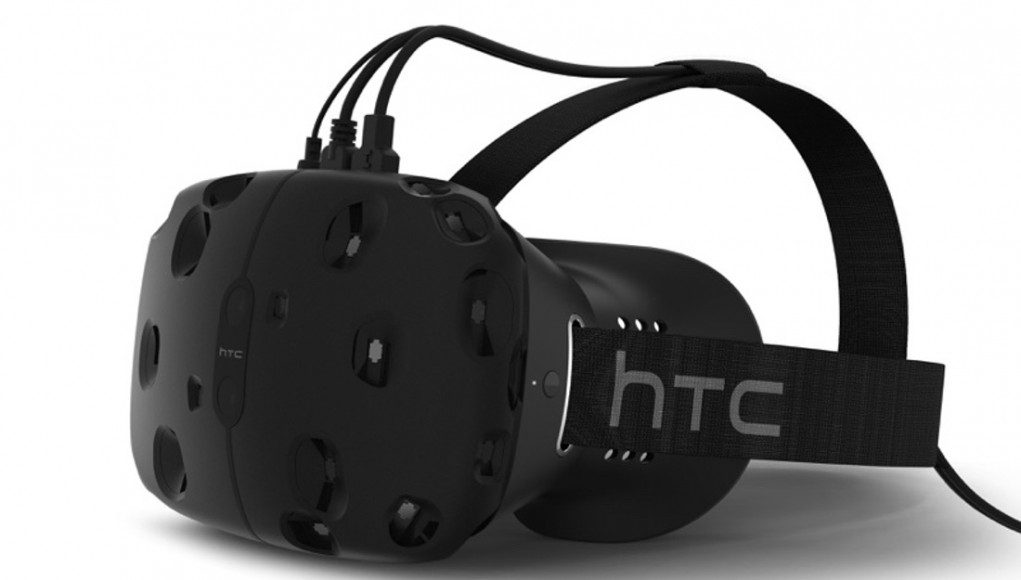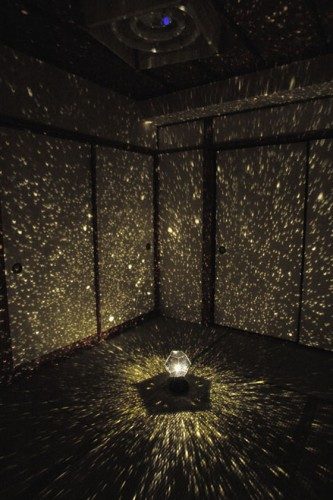There’s still a lot of unanswered questions surrounding HTC’s Steam VR Headset the Vive, not least of which how exactly the tracking solution works. There is one theory that has emerged which does offer a plausible solution.
Yesterday, in the chaos of a (mostly) surprise announcement from HTC – that they’d be manufacturing for Valve the flagship, reference VR headset to delivery Steam VR’s virtual reality experiences – we posted a breaking story which stated the new device uses an inside-out tracking solution, based on the sensor array visible on an early, official render of the device. We later retracted this statement as there was no hard evidence at the time to support this claim.
After some thought since then and a lot of community discussion, we think the statement has some merit. And although this is purely speculation right now (we’ll find out soon enough how Valve’s vision for VR works at GDC this week), we also figured the theories were interesting enough to explore.
The Oculus Rift DK2, which debuted at GDC 2014, in a bid to resolve issues such as simulation sickness – caused by a disconnect between the visuals a VR headset displayed and your physical movements – introduced its IR ‘outside in’ camera-based positional tracking system. The camera picks up IR LEDS on the face and sides of the headset, which pulsate at determined frequencies from which absolute orientation and translational position can be determined, as long as the headset remained in the field of view of the camera – outside of which the headset defaults to on board sensors. This is called ‘outside-in’ tracking, as the observer device is based off-headset, looking at the object which is being tracked.

Back in January 2014, at Steam Dev Days, a couple of months before the DK2 made its debut, people were being wowed by a prototype headset, developed by Valve’s R&D lab, which used dual LCD panels and a positional tracking system which used printed, fiducial markers (think QR Codes) places on the walls, ceilings and floor of a special demo room. Headset mounted cameras used these markers to determine the user’s absolute position in 3D space by tracking the positions and orientation of these codes. This is an ‘inside-out’ tracking system, so called because the observer devices are mounted on the tracked device, determining it’s position using information from the world around it.

So it’s not a huge stretch to think that Valve would evolve that system for use in their new, commercial headsets. Clearly though, no one wants to have to print off 60 markers to stick all over their house, so how can Valve offer the same level of tracking fidelity in a package suitable for use by the average Joe?
The answer may be in the information we already have. The initial specifications, as displayed on the new HTV Vive website states:
A gyrosensor, accelerometer, and laser position sensor combine to precisely track the rotation of your head on both axes to an accuracy of 1/10th of a degree, allowing you to look around the virtual environment naturally.
..and perhaps more tellingly:
Couple the headset with a pair of Steam VR base stations to track your physical location (in spaces up to 15 feet by 15 feet) – get up and walk around insIde the virtual world!
The theory, as explored on this /r/oculus thread, is that those base stations act as projectors, throwing IR versions of the fiducial markers seen in the Steam Dev Days demo room, out onto all surfaces of the user’s room. The sensors on the Vive then pick up the markers, tracking the user in 3D space in a similar manner.
The technology may bear some resemblance to this project, which used a central projector which threw out IR lights into the room. This forum thread has Palmer Luckey, inventor of the Oculus Rift, stating he was working on a project similar to this back in January 2014. Given Oculus’ close relationship since the launch of the Rift’s Kickstarter, it’s not much of a leap these ideas were being shared. At the very least, it means the idea probably has some technical merit.
We’ll find out more very soon of course. GDC 2015 is about to kick off, and Valve is due to demonstrate it’s new hardware to delegates at the show, including our very own Road to VR reporters on the ground. We’ll of course report back once we have more detailed information on the HTC Vive and Steam VR.








